Josh's Frogs
How to Make a Vivarium Waterfall
Today, we'll show you how to make a background using the Josh's Frogs Vivarium Waterfall Background Construction Kit. This kit is a good first step towards creating a beautiful vivarium with a cascading waterfall.
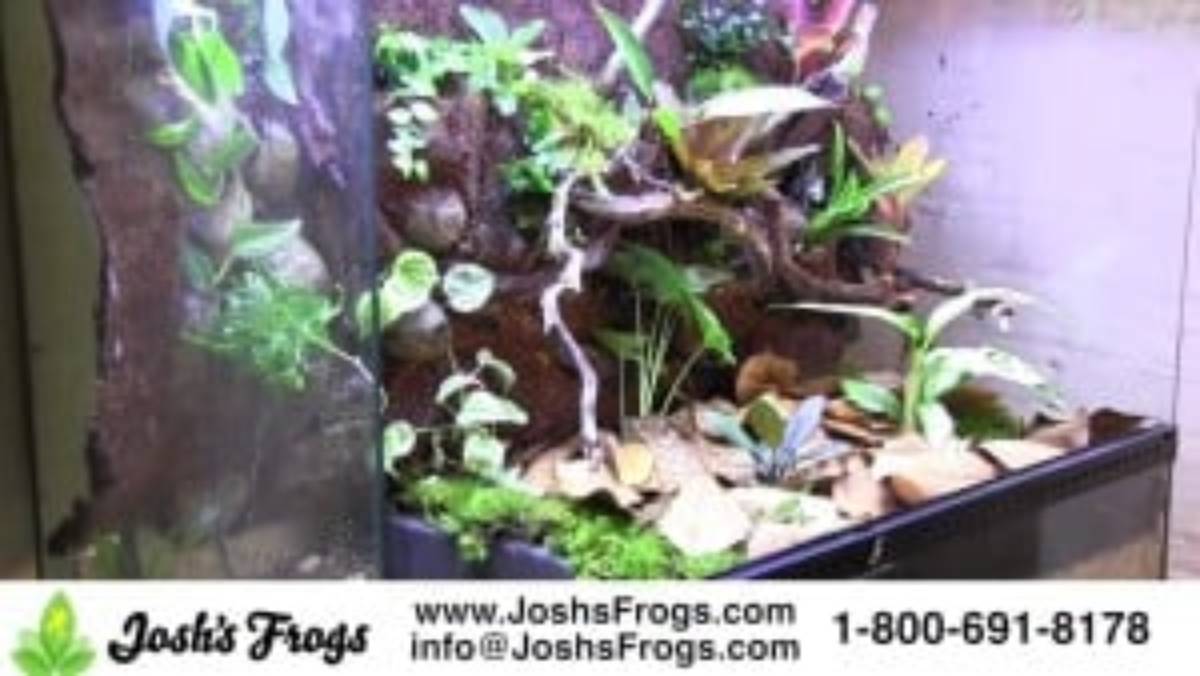
It contains:
- Great Stuff Spray Foam
- Black Vivarium Safe Silicone
- Josh's Frogs Coco Cradle Coconut Fiber
- 3 inch Net Cups
- Ecoplus®66 Bottom Draw Submersible Pump
- Vivarium Waterfall Tubing
- Universal Rocks
- Substrate Barrier
In addition to these supplies (we're using more than what's in one kit as this is a big tank!), we'll also be using some vivarium substrates, wood, and live terrarium plants, all available at Josh's Frogs!
Let's Begin
Starting out, position your pump in place and attach the vivarium waterfall tubing. You may wish to use a piece of PVC pipe (1 1/4” works well) as a way of getting the pump cord through the background without being permanently foamed into place. Position any wood, pots, and the fake rocks how you'd like them to appear, then foam them into place. The foam should be applied in thin layers. Allow several days for drying between foam applications.
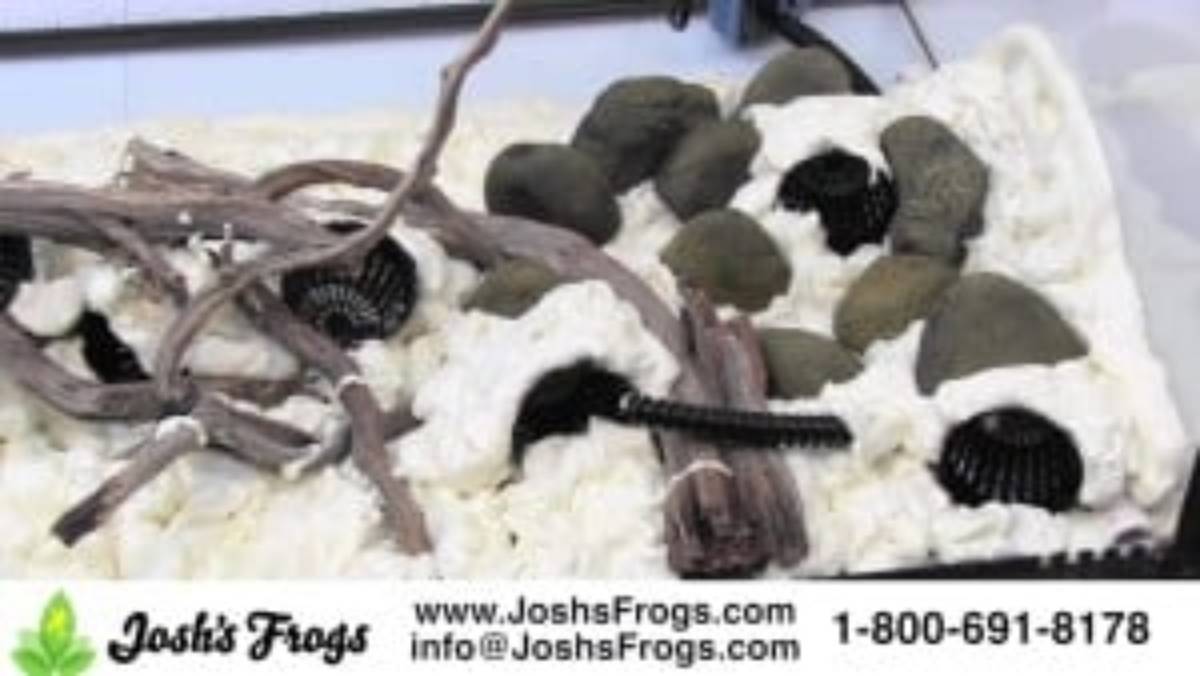
After the foam has dried, it's time to sculpt it with a knife. A serrated steak or break knife works well. Hack away at the foam, exposing the roughly textured subsurface. Silicone will easily adhere to this surface.
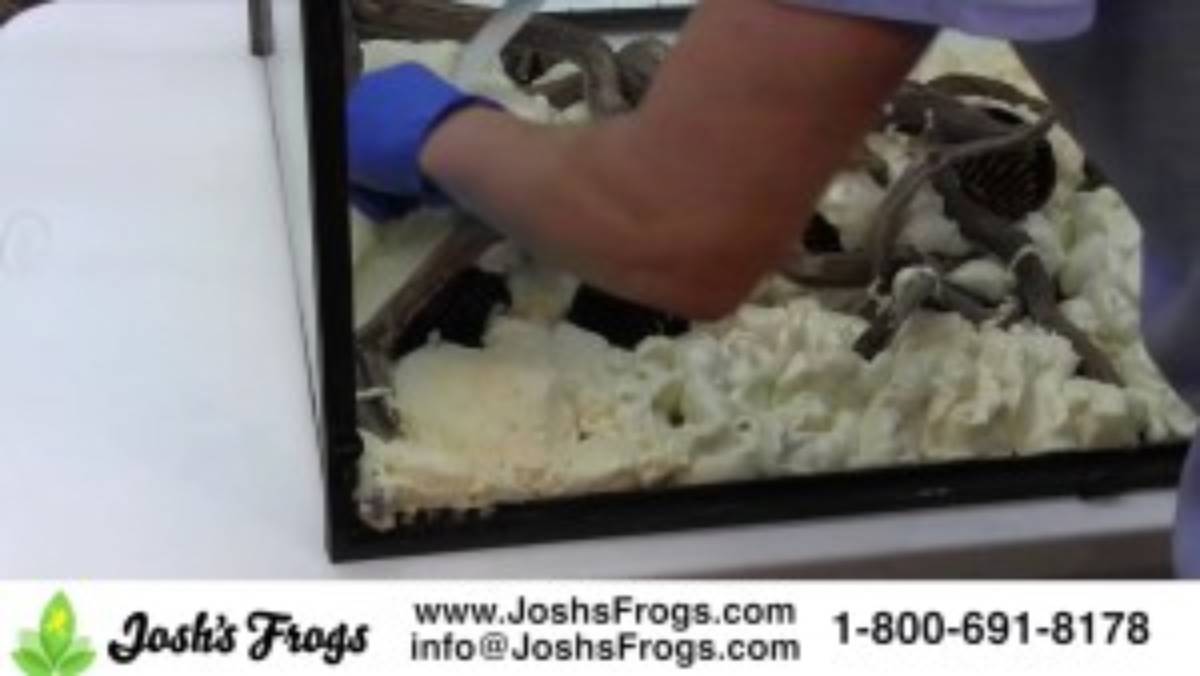
Silicone
After the foam is trimmed and any waste pieces disposed of, it's time to apply silicone! Make sure to wear gloves, and only use 100% silicone that's safe for aquaria. Silicones sold at home improvement stores are typically not animal safe. Many contain arsenic as a mold inhibitor. Josh's Frogs carries 100% animal safe silicone in black and clear. For background use, go with black silicone. Using a caulk gun, apply silicone to a small, approximately 8 inch by 8 inch area.
Then, while the silicone is still wet, press dry cocofiber or peat moss into it. Repeat until the entire background is covered. Allow to dry for several days, until no silicone smell remains.
Substrates and Plants
After everything has dried, it's time to add substrates and plant! You can use foam to create a pond wall and futher define your water feature, then fill the tank with substrate.
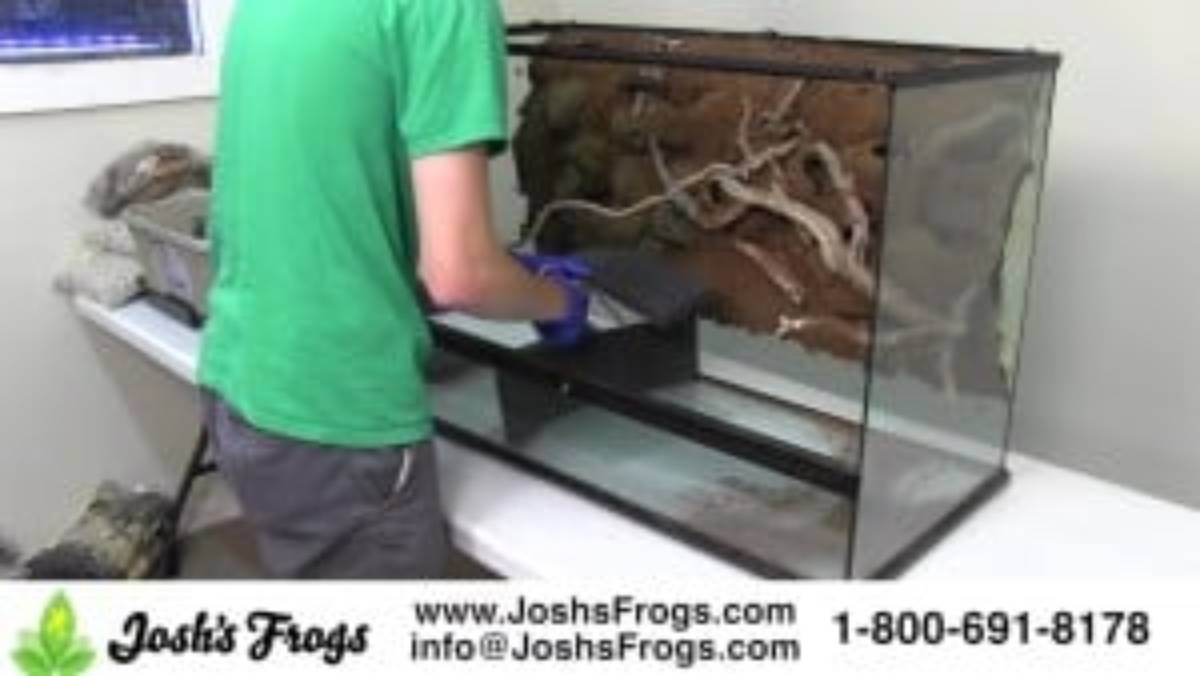
Add in hydroton/false bottom so that it is 1” higher than your pump is tall, followed by substrate divider and ABG mix.

Plant your plants – a Josh's Frogs Plant Kit makes plant selection easy. Larger and vining plants should go towards the back, while lower growing plants should be planted towards the front. Plant epiphytes on the background, using a big of ABG and the foamed in net pots.
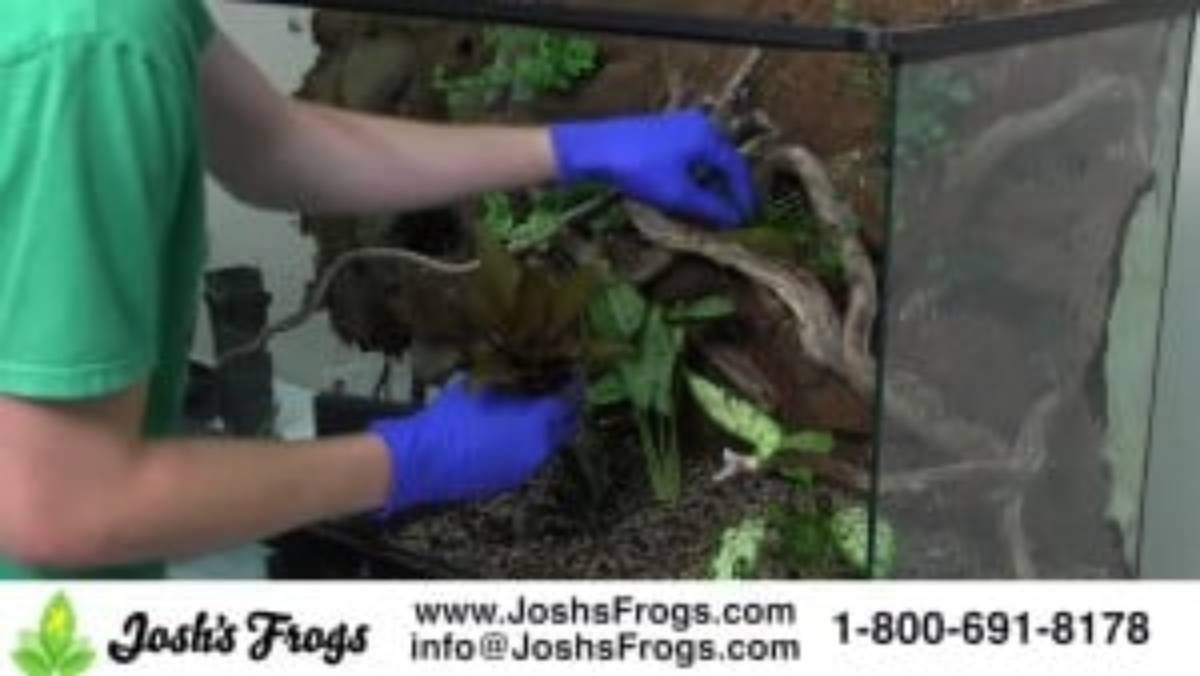
Add some springtails and isopods, then top off the ABG with sphagnum moss and leaf litter. Mist the tank down well, then add r/o or distilled water to the water section until the water covers your pump. Plug in the pump, and you're good to go!
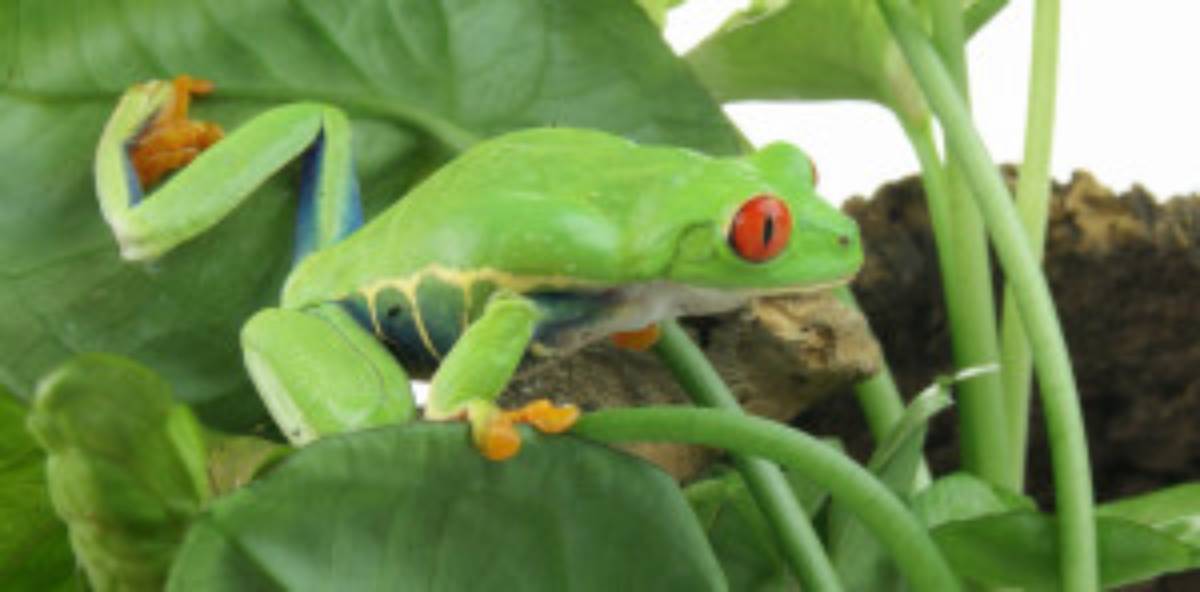
Conclusion
This vivarium would be great for animals that live on the margins of ponds or in/around small bodies of water, such as reed frogs, fire belly toads, and species of Theloderma (mossy frogs). Many species of tree frogs and toads, such as Yellow Spotted Climbing Toads, Red Eye Tree Frogs, Borneo Eared Frogs, and Amazon Milk Frogs, would thrive in this environment - just take care to perform regular water changes, and provide adequate ventilation via a partial screen top. Mantellas and Dart Frogs would do well, too - just take in to account the reduced land area present in the tank, which would reduce the numbers of animals that could be safely kept in this vivarium.
For your bioactive and naturalistic vivarium needs, visit Joshsfrogs.com today!
